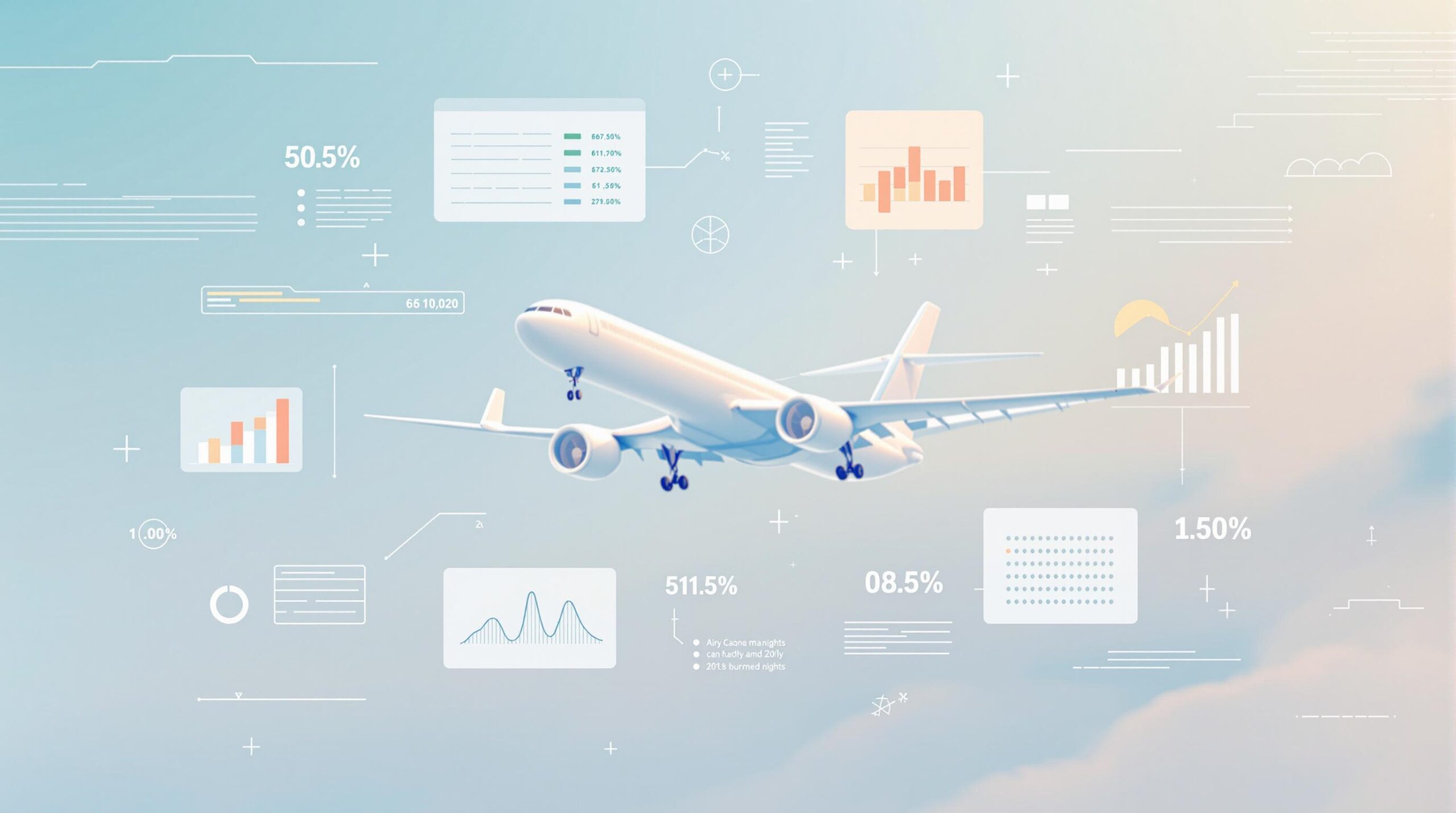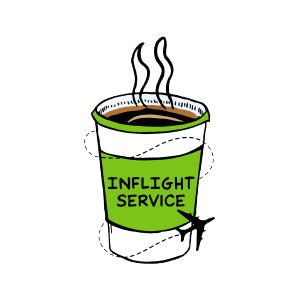Modern aviation safety relies on data analysis to prevent incidents. By identifying risks early, airlines can address potential issues before they escalate. Here’s how data tools are transforming safety:
- Advanced Algorithms detect anomalies in flight data, predicting risks.
- Machine Learning analyzes complex variables like mechanical systems and human factors.
- Visualization Tools simplify large datasets, revealing actionable trends.
- Data Sharing across organizations improves safety insights while maintaining privacy.
With air traffic expected to triple, managing safety data effectively is key to maintaining aviation’s exceptional safety record.
Analysing flight safety data with Python
Methods for Safety Data Analysis
Modern aviation safety depends on advanced data analysis to handle the vast amount of information gathered from various sources. These techniques have transformed how the industry identifies and addresses safety risks.
Common Analysis Models and Methods
The aviation sector uses a variety of sophisticated methods to analyze safety data. Tools like MITRE‘s Aviation Safety Data Mining Workbench serve as a foundation for these techniques [2].
Algorithms designed for large-scale data analysis play a key role in monitoring safety across extensive datasets [1]. These tools process operational data efficiently, helping to spot risks before they develop into serious incidents.
Here’s a breakdown of some widely used techniques:
| Technique | Purpose | Benefit |
|---|---|---|
| Advanced Algorithms | Detect anomalies in large datasets | Spot risks early |
| Time Series Analysis | Identify patterns in operational data | Reduce the chance of incidents |
| Pattern Mining | Examine incident reports | Uncover hidden relationships |
Managing Large Safety Datasets
Working with massive safety datasets comes with challenges like missing information, noise, and sheer scale. To address these, analysts rely on advanced data mining and visualization tools. These tools help combine data from different sources, making it easier to find patterns and connections essential for improving safety.
"Data analysis is critical for understanding the airspace, correcting current problems, and anticipating future issues. It helps in identifying sequences of events that could lead to adverse events, enabling timely interventions" [1][4].
By integrating data from multiple sources, analysts can:
- Recognize patterns across various operational areas
- Detect subtle links between unrelated factors
- Build more accurate models to predict safety risks
Recent advancements in scalable algorithms have greatly improved the ability to identify early warning signs of safety incidents [1][3]. These methods and tools provide the foundation for analyzing safety trends and patterns, which will be covered in the next section.
Finding Safety Incident Patterns
Managing extensive safety datasets in aviation is no small task. This section delves into how advanced analysis techniques help reveal actionable patterns within flight data.
Flight Data Pattern Analysis
Modern aviation systems produce enormous volumes of data, such as FOQA (Flight Operational Quality Assurance) records. These records track various components during flights, including flight controls, engines, and avionics. Here’s a breakdown of key areas of data collection:
| Component Type | Data Collected | Analysis Purpose |
|---|---|---|
| Flight Controls | Control inputs and responses | Spot unusual handling patterns |
| Engine Systems | Performance parameters | Detect potential mechanical issues |
| Avionics | Navigation and instrument data | Monitor system reliability |
| Landing Gear | Operation and stress metrics | Evaluate landing safety |
The Aviation Safety Data Mining Workbench uses specialized tools to process this data. For example, the FindDistributions tool pinpoints anomalies, such as sudden changes in engine performance, which might signal mechanical problems that need immediate attention [2].
"The ultimate goal is to develop a process that can complement the existing state-of-the-art human-generated exceedance-based method to uncover some operationally significant events due to environmental, mechanical, and human factors issues in high dimensional, multivariate Flight Operations Quality Assurance (FOQA) database." [1]
Data Visualization for Safety Analysis
Visualization tools play a key role in transforming complex safety data into clear, actionable insights. These tools, which include pattern recognition algorithms and interactive dashboards, allow analysts to spot trends, confirm findings, and effectively communicate safety concerns. Domain experts then review flagged anomalies to assess their operational importance and potential safety risks [1].
These visualization methods have been particularly useful in uncovering issues related to human-automation interaction – an area of growing importance as aircraft systems become increasingly intricate [1].
sbb-itb-de05b1b
Using Data in Safety Management
After identifying patterns, the next step is applying these insights within safety management systems. With aviation systems becoming more complex and air traffic expected to grow, managing data effectively is key to upholding safety standards.
Data Quality and Management Standards
High-quality data is the backbone of reliable safety analytics. Strict standards for data collection and management ensure accuracy and reliability. Here are the three main pillars:
| Quality Aspect | Requirements | Validation Method |
|---|---|---|
| Accuracy | Data reflects actual events and measurements | Regular audits and cross-checks |
| Completeness | All necessary fields and parameters are captured | Automated validation tools |
| Consistency | Uniform formats across systems | Data normalization processes |
The Aviation Safety Data Mining Workbench showcases these principles, using multiple verification layers to maintain data integrity before analysis begins [2].
While ensuring data quality is essential, organizations must also tackle systemic challenges to make the most of safety analytics.
Common Implementation Barriers
Adopting new data analysis methods in safety systems can be challenging. Research from NASA Ames Research Center highlights some key obstacles:
| Barrier | Impact | Solution Strategy |
|---|---|---|
| Technical Expertise Gap | Difficulty implementing advanced analytics | Provide training and access to expert resources |
| Data Integration Issues | Fragmented safety information across platforms | Develop unified analysis systems |
| Organizational Resistance | Hesitation to adopt new methods | Use phased rollouts to ease transitions |
NASA’s knowledge discovery process illustrates how these strategies can work, successfully identifying critical events in aviation data [1]. Additionally, organizations should prioritize robust data protection measures, such as encryption and access controls. Machine learning can further enhance safety by predicting potential incidents, enabling proactive responses.
Next Steps in Safety Analytics
The aviation industry is transforming how it approaches safety analytics. With modern aircraft systems becoming more complex and technology advancing, there’s a growing need to manage and analyze the enormous amounts of data generated during flights.
Emerging Analysis Technologies
New data mining techniques and scalable algorithms are changing the way safety analytics are handled. Tools like SequenceMiner and Multiple Kernel Learning are now being used to identify unusual patterns and anomalies in flight data. These methods allow for deeper analysis of safety trends, helping to uncover critical insights.
For example, scalable multiple kernel learning enhances pattern recognition, making it possible to process massive amounts of flight data and spot issues more effectively. When combined with collaboration across the industry, these advancements significantly improve safety practices.
The Role of Data Sharing
Sharing data between aviation organizations has become a key part of improving safety. By pooling insights, the industry can identify broader trends and address risks more effectively. The European Commission has emphasized this approach through initiatives aimed at raising safety standards.
"The world-wide civilian aviation system is one of the most complex dynamical systems ever created." – Bryan Matthews et al., NASA Ames Research Center [1]
Tools like FindSimilar and FindAssociations make it easier to share and analyze data across organizations. These tools help uncover patterns and relationships that might otherwise go unnoticed. But with this level of collaboration comes the need to address legal and privacy concerns.
Balancing Privacy and Legal Compliance
While sharing data is crucial, it must be done responsibly. Protecting sensitive information and meeting legal requirements are non-negotiable. Organizations need to ensure that their data-sharing efforts comply with privacy laws and international standards.
| Area of Focus | Key Measures |
|---|---|
| Data Security | Use of encryption and role-based access controls |
| Compliance | Adherence to FAA and global aviation regulations |
With air traffic expected to triple in the coming decades [1], these considerations are more important than ever. Aviation organizations must adopt strong data governance practices to protect privacy while continuing to share vital safety information across the industry. This balance is essential for maintaining trust and advancing safety efforts.
Conclusion
Data’s Role in Safety Prevention
Modern analytics has shifted the aviation industry from reacting to incidents to actively preventing them. With tools like pattern recognition and anomaly detection, organizations can spot risks early and address them before they lead to problems.
Steps Toward Improved Safety
Using data analysis to boost aviation safety requires a clear strategy that blends technology with practical application. This involves refining how data is gathered, applying advanced tools for analysis, and using expert insights to interpret safety trends effectively.
Key areas of focus include:
- Streamlining data collection and analysis workflows
- Using better algorithms to improve pattern recognition
- Integrating expert judgment into safety evaluations
- Ensuring strong data privacy and security measures




